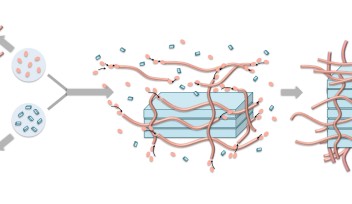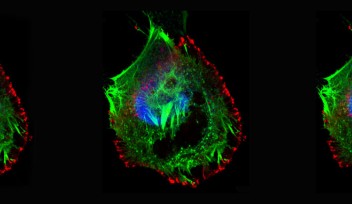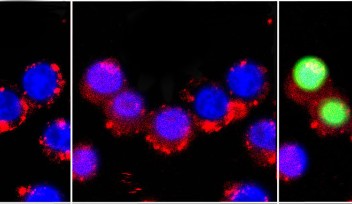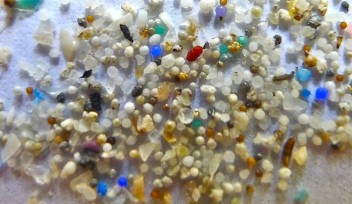Casting light on glow-in-the-dark materials

We're all probably familiar with light-emitting numbers on alarm clocks and the fluorescence of emergency signs. These glow-in-the-dark features have been around for decades. They have many functions, particularly because they allow for important objects to be seen in the dark. But most of these materials are made from inorganic substances that have complicated manufacturing processes, which require rare elements and fabrication temperatures to be over 1000°C.
However, according to one researcher at the Okinawa Institute of Science and Technology Graduate University (OIST), this might not be the case in the not-so-distant future. Organic materials could provide a viable alternative for glow-in-the-dark devices, and they are easier and cheaper to produce, explained Professor Ryota Kabe.
Professor Kabe joined OIST in August 2019 and leads the Organic Optoelectronics Unit. This unit explores the optical and electrical properties of organic molecules that could be used for glow-in-the-dark devices. Professor Kabe and his team spend their days designing and synthesizing new organic molecules based on both computational calculations and experiments.
“I combine photochemistry with photo-physics to produce novel glow-in-the-dark materials,” said Professor Kabe. “With this research, we’ll eventually be able to make different inks and paints that have glow-in-the-dark properties and to expand their applications.”

Glow-in-the-dark materials are activated upon exposure to ultraviolet or visible light. Substances within a given material absorb the excitation energy and release it as a differently colored light either quickly or slowly. Researchers have been exploiting the slow emission process for several decades.
In 2017, research led by Professor Kabe, published in Nature, described the first genuine organic glow-in-the-dark system. The researchers demonstrated that this material could glow green for more than one hour at room temperature if they applied a simple mixture of two organic molecules. Unlike glow-in-the-dark devices that use inorganic materials, this system did not require rare elements and was much easier to fabricate.
The molecules Professor Kabe designed are colloquially known as an ‘electron donor’ and an ‘electron acceptor’. When exposed to light, the electron acceptor gains the extra energy necessary to take an electron from the electron donor. This results in the donor becoming positively charged. When the two charges eventually come back together, they gradually release their energy as light for over an hour. Previously, the longest emissions from organic material at room temperature were only a few minutes.
More recently, in a study published in Advanced Functional Materials, Professor Kabe reported that by fine-tuning elements of the molecules, he and his colleagues were able to create an orange glow-in-the-dark material that was more stable.
“It depends on the structure of the materials,” said Professor Kabe, “If we mix two materials, then we can see that they can have a different function. These kinds of materials can be used for all sorts of emergency lights, paints, and inks. Normally, they require very high temperatures to make, but because our materials are all organic, we can produce them cheaply and efficiently.”

Whilst at OIST, Professor Kabe plans to continue to investigate different materials that could have glow-in-the-dark functions. He is excited about the interdisciplinary approach and the resources that are available here.
“I came to OIST for the research environment. In my opinion, this is the best place in Japan for research as the facilities are so good.”
Specialties
Research Unit
For press enquiries:
Press Inquiry Form
















